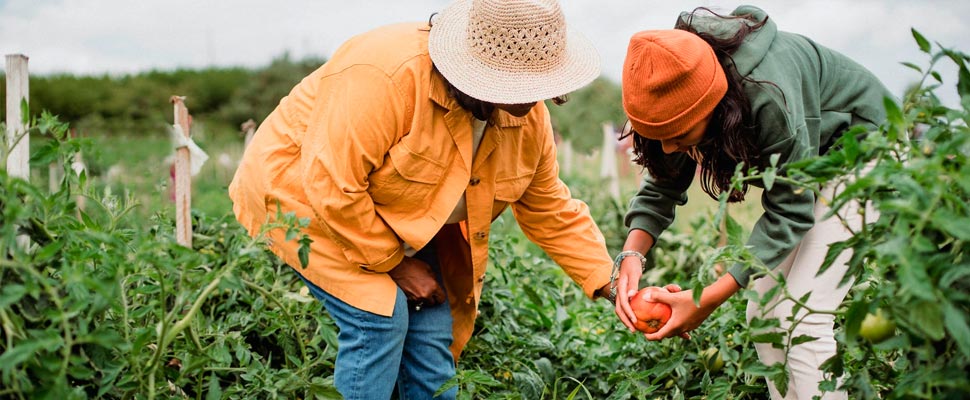How Coronavirus Can Affect Farming
The coronavirus pandemic is having a significant impact on the agricultural sphere, causing disruption of its processes.

Taisiia Kuznetsova
Escucha este artículo
The biggest concerns include an oversupply of food, a shortage of labor, and changes in consumer demand that are harming not only small farmers but also large producers around the world. Let's get deeper into these issues and possible ways to help farmers in this difficult time.
Shortage of Workers
Farmers also face problems due to the lack of staff. Self-isolation and social distancing guidelines slow down the job selection process, and national restrictions disrupt the normal international flow of labor in the industry. For example, the agricultural sector in Europe is facing severe labor shortages due to border closures that prevent hundreds of thousands of seasonal workers arriving at farms that rely on them. The impact on the sector is expected to be long term. A number of major European agricultural producers, including France, Germany, Italy, Spain, and Poland, are particularly vulnerable.
Dairy Sector Under Threat
While coffee shops were completely closed in some countries, excess milk became a reality. In the United States, farmers were forced to dump 14 million liters of milk every day due to supply disruptions, and in the UK – about 5 million liters per week.
The Harvest Goes to Waste
Some manufacturers have tried to focus on the needs of ordinary buyers. However, this has changed market demand, and overstock remains a problem across the sector. To prevent that, here is an example of how to care for a corn plant to help farmers get some useful ideas on farm management to prevent overstock during pandemic.
Read also: The consequences of the denialist governments of the Covid-19
Supply Chains Slowdowns and Shortages
There have been no significant disruptions in food supply since the start of the pandemic. However, logistical problems in supply chains, in particular cross-border and domestic restrictions on movement can lead to food supply disruptions, especially if they remain unresolved for a long time. Goods with high added value, and in particular perishable goods such as fresh fruits and vegetables, meat, fish, milk and flowers may be the first to be affected.
Restrictions on movement can prevent farmers from gaining access to markets and lead to the destruction of produced foods. In many countries, farmers are currently unable to sell their produce at local markets or at local schools, restaurants, bars, hotels and other facilities that are temporarily closed.
Change in Consumer Demand
The pandemic has also brought changes to the population consumption habits. For instance, in the UK, the demand for flour has increased significantly due to the fact that people stuck at home are increasingly turning to homemade baked goods. At the same time, French buyers are increasingly purchasing more organic food. Parts of the food industry are benefiting from changing consumption habits. For example, sales of orange juice in the US, which were gradually declining, rose sharply during lockdown.
Price Jumps
Panic buying and stockpiling of food by consumers, as well as national trade policies related to the pandemic could lead to price surges and increased price volatility, destabilizing international markets. This is especially true with regard to any restrictions on export. Previous crises have shown that such measures primarily harm countries with low income levels and food shortages.
Ways to Support Farming in Pandemic
In the current situation where the COVID-19 pandemic or the fear of its spread is having a negative impact on the agricultural sector, appropriate emergency measures should be taken to support agri-food enterprises to stimulate agricultural production and ensure that workers continue to receive decent wages in line with existing agreements and laws. In this context, particular attention should be paid to the hundreds of millions of agricultural workers who, while playing a crucial role in ensuring the continuity of the food supply chain, are often the most vulnerable.
To maintain the highest possible efficiency by optimizing resources during the pandemic, farmers can also consider utilizing modern available technologies to help. The easiest way to do that is to use online tools for fields monitoring, which help to manage the land remotely while significantly reducing costs and optimizing the use of resources. One of such tools is EOS Crop Monitoring. The platform allows for easy and fast decision-making, offering all the needed field data in one screen. The data is retrieved from satellites, automatically analyzed by the tool to provide the most accurate information. In times such as the pandemic, it’s a great opportunity not only to manage the field remotely but also to optimize field activities management and resources use, including labor. Ultimately, it helps farmers to adapt to the pandemic-related threats as easy as possible.
Addressing the impact of today's health crisis on the agri-food sector, national and international policy regulations must be built on the WHO’s core principles for responding to the COVID-19 pandemic, which include four main pillars: stimulating the economy and employment, supporting small businesses, protecting workers in the workplace, and relying on social dialogue for decision-making. This is what will help farming to stay on track during the pandemic.




